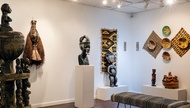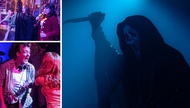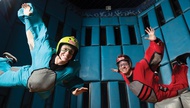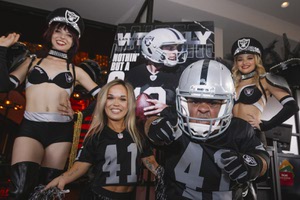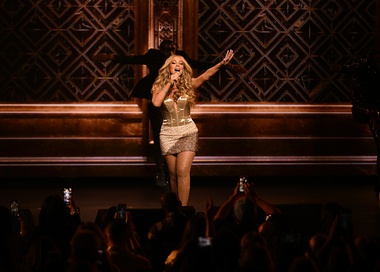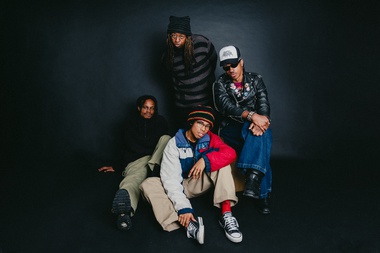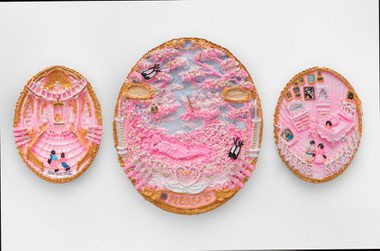Nouvelle Experience Before Mystère, this Cirque du Soleil show played in a tent in the Mirage parking lot. After touring Canada and the West Coast, it settled in for an extended stay here on November 10, 1992. Vegas proved to be the ultimate stop, but not before the show had run for more than a year, closing on November 21, 1993, having helped convince Steve Wynn of Cirque’s viability on the Strip. The quasi-narrative of the show had Everyman torn between “flounes” (fallen angels), Devils and the big, bad Corporation, all expressed in now-familiar Cirque visual vocabulary. Although scarcely remembered today, Nouvelle Experience would cast a long shadow over Strip history.
This Is Boy-Lesque Despite tempting fate by opening on Friday the 13th (of May 1977), this Kenny Kerr drag show had an auspicious effect, bringing female interpretation into the Vegas mainstream; previously, it had only a transitory presence on stages here. For all its dance routines and female impersonations, the show was anchored by Kerr’s take-no-prisoners humor and song interpretations. To present the revue at all took some courage on Kerr’s part, since Nevada’s sodomy laws at the time made it difficult to be openly gay. Boy-Lesque debuted, aptly enough, in the Silver Slipper’s Gaiety Theatre and would remain a fixture of the casino until its sale in 1988, whereupon Kerr took his spangles and fanbase to the Sahara.
Hallelujah Hollywood! Well before Jubilee!, Donn Arden conceived and staged this revue for the original MGM Grand (now Bally’s). It was, Playboy opined, “everything old Hollywood has come to represent—glitter, gaudiness, glamour—turned out with that special perversity only Vegas can provide.” The spectacle included 700 costumes (many designed by Bob Mackie), a couple of promising young magicians named Siegfried and Roy and the Strip’s first all-black chorus line. By present-day Vegas standards, Hallelujah Hollywood! had a good run, debuting in late 1973 and lasting until 1980, the year of the MGM Grand fire.
Casino de Paris Imported from its titular city, this two-decade Strip mainstay launched at the Dunes in 1963. In addition to bare breasts (and lots of them; the show had a cast of 100), the $2 million spectacular featured pec-flexing musclemen and an eight-sided armature called the Octuramic that got deployed into the audience. Producer Frederic Apcar had already struck gold at the Dunes with Viva Les Girls!, and Dunes management was so confident in the Parisian’s Vegas sequel, it built a theater expressly for the new spectacle. The show demanded 518 costumes and 250 hats—designs that in the 1970s would be reimagined for Vegas by none other than Yves St. Laurent.
Harold Prince productions Phantom—The Las Vegas Spectacular was not the Broadway master showman’s first encounter with the Strip. During the late ’50s and early ’60s, Prince-directed “tab” shows were a regular fixture of the Strip, beginning with Pajama Game at the Dunes in 1957 and continuing through Fiddler on the Roof at Caesars Palace, the latter starring Theodore Bikel. A more-obscure Prince-ling was Tenderloin, which only lasted 216 performances on Broadway, but which Prince was able to leverage into a Dunes engagement that opened in May 1961 and played for two adults-only shows a night, 14 times a week. Phantom was really an aberration among the Prince-in-Vegas tradition, because he changed elements of the original show (especially the timing of the chandelier fall), whereas his prior imports had replicated the Broadway experience as closely as possible under Strip time constraints.

